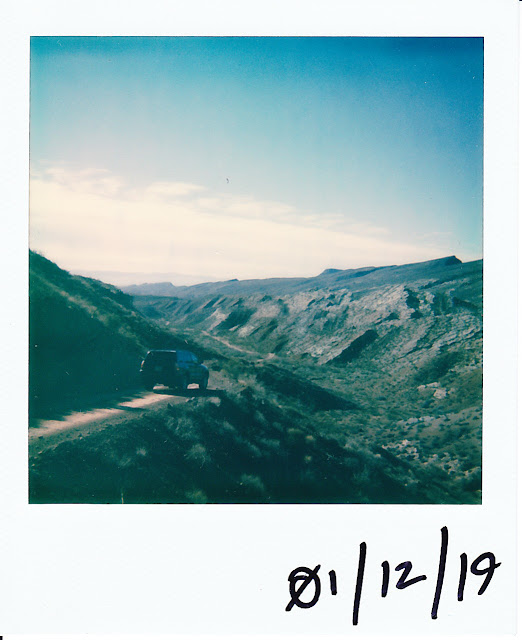A graded dirt road takes you directly east from the I-15, descending gradually along cliff edges and tectonic uplift into a sandstone gulch carved by the waters of the Virgin. The river is beautiful and a moderate level, at least in January - we hope to float it later this year, when the temps are a little warmer.
Expect some traffic! Plenty of other off-roaders and UTV riders when we were there on a Saturday, some heading to Babylon, some to Sand Cove or Babylon Arch. 4-wheel drive is not necessary on a dry day, but might be helpful in case things get hairy.
To get to the Mills:

(1) Take exit 27 off the I-15 towards Toquerville. Take an immediate right onto the frontage road that runs parallel to the I-15 heading south.
(2) Continue south, passing the small development of homes on your left.
(3) Take a left turn at 900 N Rd, heading east.
(4) You'll pass some homes on the paved part of the road - ignore their driveways, and stay left on the main drag for a few miles.

(5) Continue past the turnoff to Sand Cove Campground.
(6) Look close and you'll see what appears to be an abandoned cabin to the east of the road here. It is worth taking a closer look at.
 (7) You've made it to Babylon Mills! Stay on the track, and enjoy the incredible examples of tectonic and geologic work.
(7) You've made it to Babylon Mills! Stay on the track, and enjoy the incredible examples of tectonic and geologic work.































